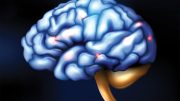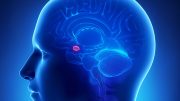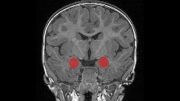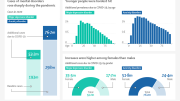
Scientists from the Universities of Bristol and Exeter have identified a gene in the brain that drives anxiety symptoms and demonstrated that modifying this gene can significantly reduce anxiety levels, presenting a potential new target for anxiety treatment. The gene, regulated by a molecule called miR483-5p, suppresses the expression of the Pgap2 gene, which controls stress-induced changes in the brain, and enhancing this pathway could lead to more potent and effective treatments for anxiety disorders.
An international group of researchers has successfully pinpointed a specific gene in the brain that is responsible for driving symptoms of anxiety.
An international team of scientists has identified a gene in the brain that is responsible for symptoms of anxiety. Significantly, altering this gene has been demonstrated to decrease anxiety levels, presenting a promising new avenue for drug treatment targeting anxiety disorders. This groundbreaking discovery, spearheaded by teams from the Universities of Bristol and Exeter, was recently detailed in a paper published in the journal Nature Communications.
Affecting 1 in 4 individuals at least once in their lives, anxiety disorders are quite common. Severe psychological distress can activate genetic, biochemical, and structural alterations in the amygdala neurons — the part of the brain associated with anxiety produced by stress. This can lead to the development of anxiety disorders, including panic attacks and post-traumatic stress disorder.
However, the efficacy of currently available anti-anxiety drugs is low with more than half of patients not achieving remission following treatment. Limited success in developing potent anxiolytic (anti-anxiety) drugs is a result of our poor understanding of the neural circuits underlying anxiety and molecular events resulting in stress-related neuropsychiatric states.
In this study, scientists sought to identify the molecular events in the brain that underpin anxiety. They focused on a group of molecules, known as miRNAs in animal models. This important group of molecules, also found in the human brain, regulates multiple target proteins controlling the cellular processes in the amygdala.
Following acute stress, the team found an increased amount of one type of molecule called miR483-5p in a mouse amygdala. Importantly, the team showed that increased miR483-5p suppressed the expression of another gene, Pgap2, which in turn drives changes to neuronal morphology in the brain and behavior associated with anxiety. Together, the researchers showed that miR-483-5p acts as a molecular brake that offsets stress-induced amygdala changes to promote anxiety relief.
The discovery of a novel amygdala miR483-5p/Pgap2 pathway through which the brain regulates its response to stress is the first stepping stone towards the discovery of novel, more potent, and much-needed treatments for anxiety disorders that will enhance this pathway.
Dr. Valentina Mosienko, one of the study’s lead authors and an MRC Fellow and Lecturer in Neuroscience in Bristol’s School of Physiology, Pharmacology, and Neuroscience, said: “Stress can trigger the onset of a number of neuropsychiatric conditions that have their roots in an adverse combination of genetic and environmental factors. While low levels of stress are counterbalanced by the natural capacity of the brain to adjust, severe or prolonged traumatic experiences can overcome the protective mechanisms of stress resilience, leading to the development of pathological conditions such as depression or anxiety.
“miRNAs are strategically poised to control complex neuropsychiatric conditions such as anxiety. But the molecular and cellular mechanisms they use to regulate stress resilience and susceptibility were until now, largely unknown. The miR483-5p/Pgap2 pathway we identified in this study, activation of which exerts anxiety-reducing effects, offers a huge potential for the development of anti-anxiety therapies for complex psychiatric conditions in humans.”
Reference: “miR-483-5p offsets functional and behavioural effects of stress in male mice through synapse-targeted repression of Pgap2 in the basolateral amygdala” by Mariusz Mucha, Anna E. Skrzypiec, Jaison B. Kolenchery, Valentina Brambilla, Satyam Patel, Alberto Labrador-Ramos, Lucja Kudla, Kathryn Murrall, Nathan Skene, Violetta Dymicka-Piekarska, Agata Klejman, Ryszard Przewlocki, Valentina Mosienko, and Robert Pawlak, 25 April 2023, Nature Communications.
DOI: 10.1038/s41467-023-37688-2
The study was funded by the Medical Research Council, Academy of Medical Sciences, Leverhulme Trust, Marie Sklodowska-Curie, and the Polish National Science Centre.









I am very sick with pharyngitis nearly five years now. Fifty eight years. I get chronic anxiety and depression weekly. I tried numerous medicines give. I want to get well very much. I must contact my doctor again for treatment.